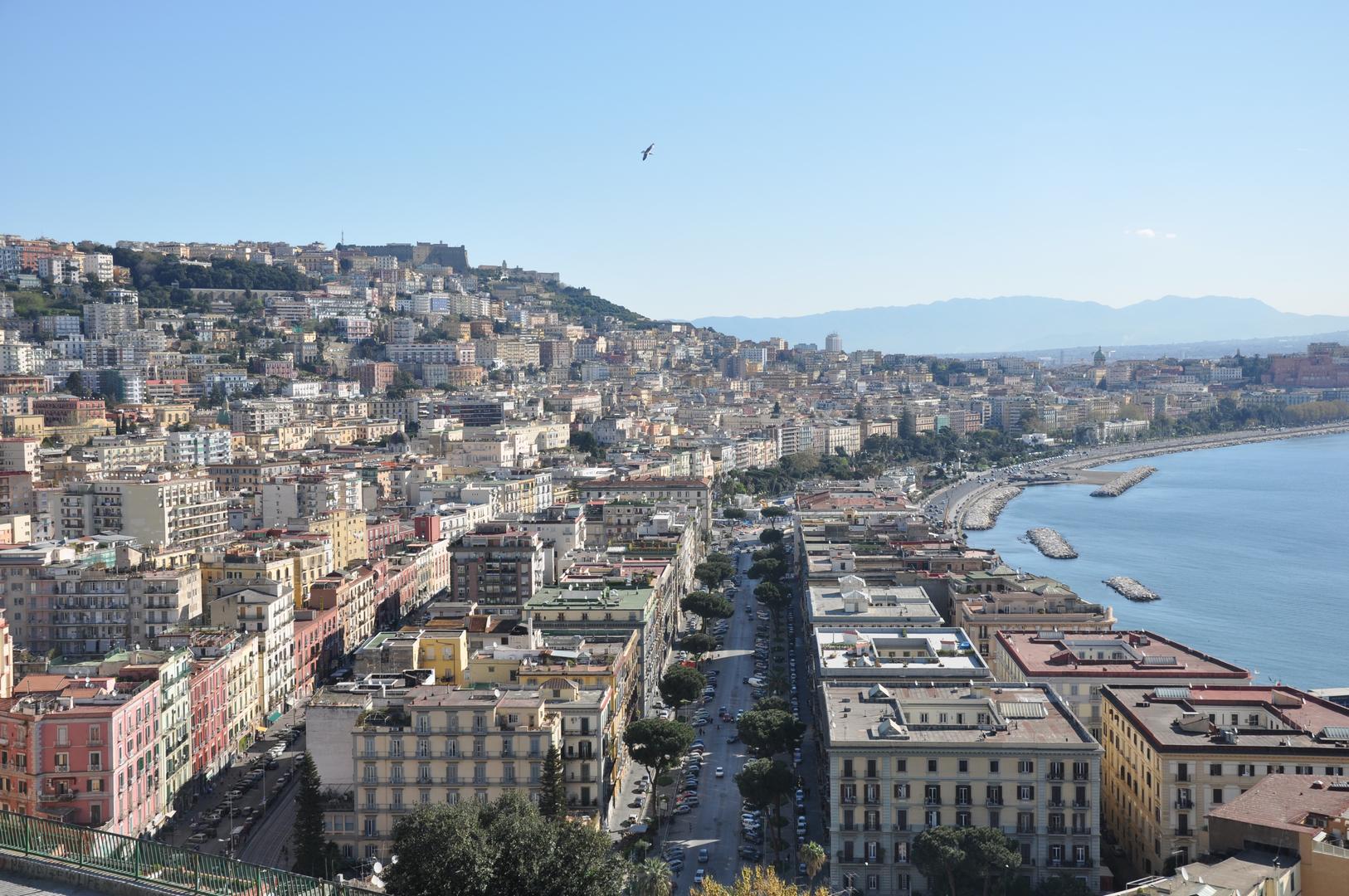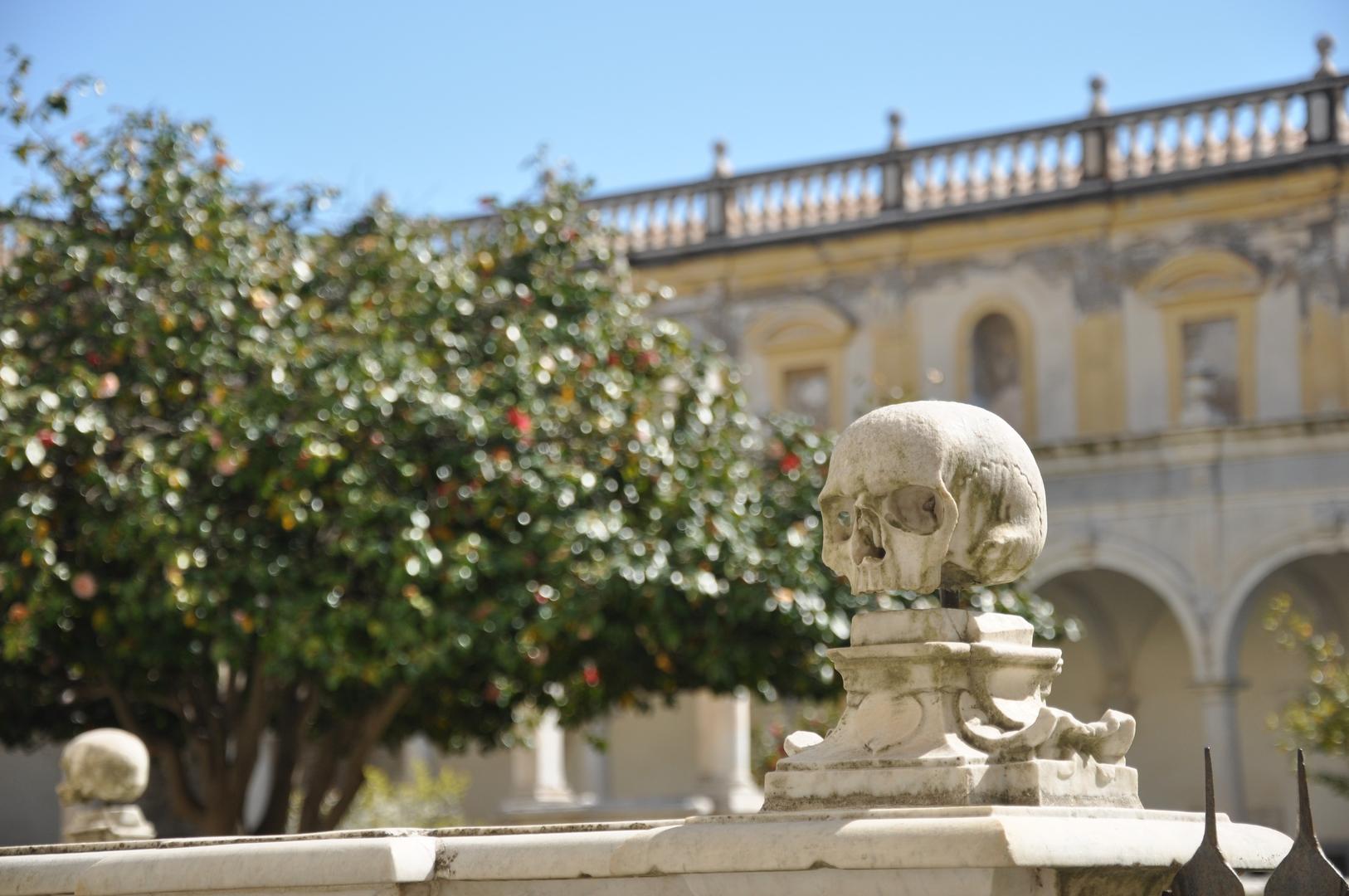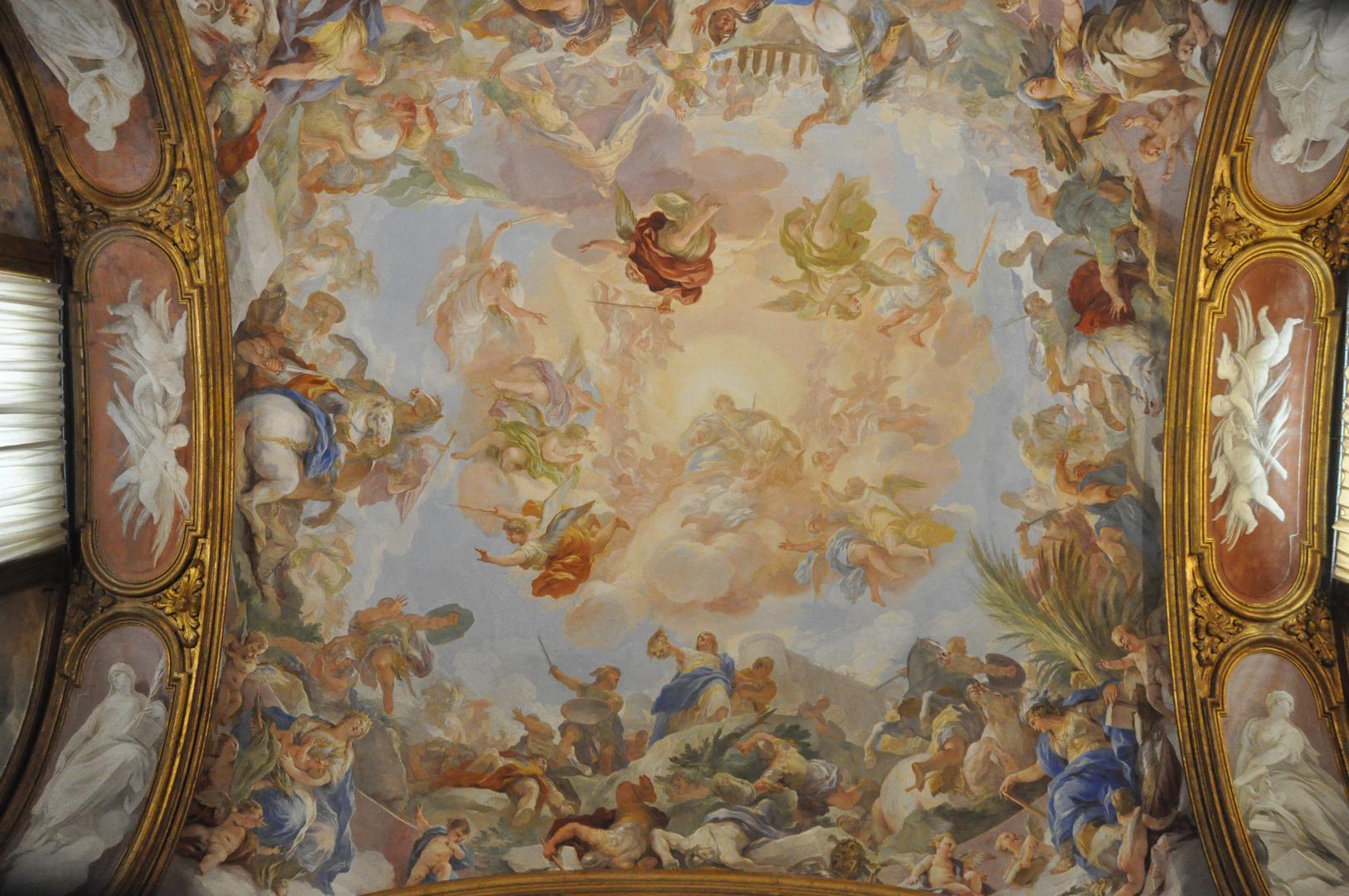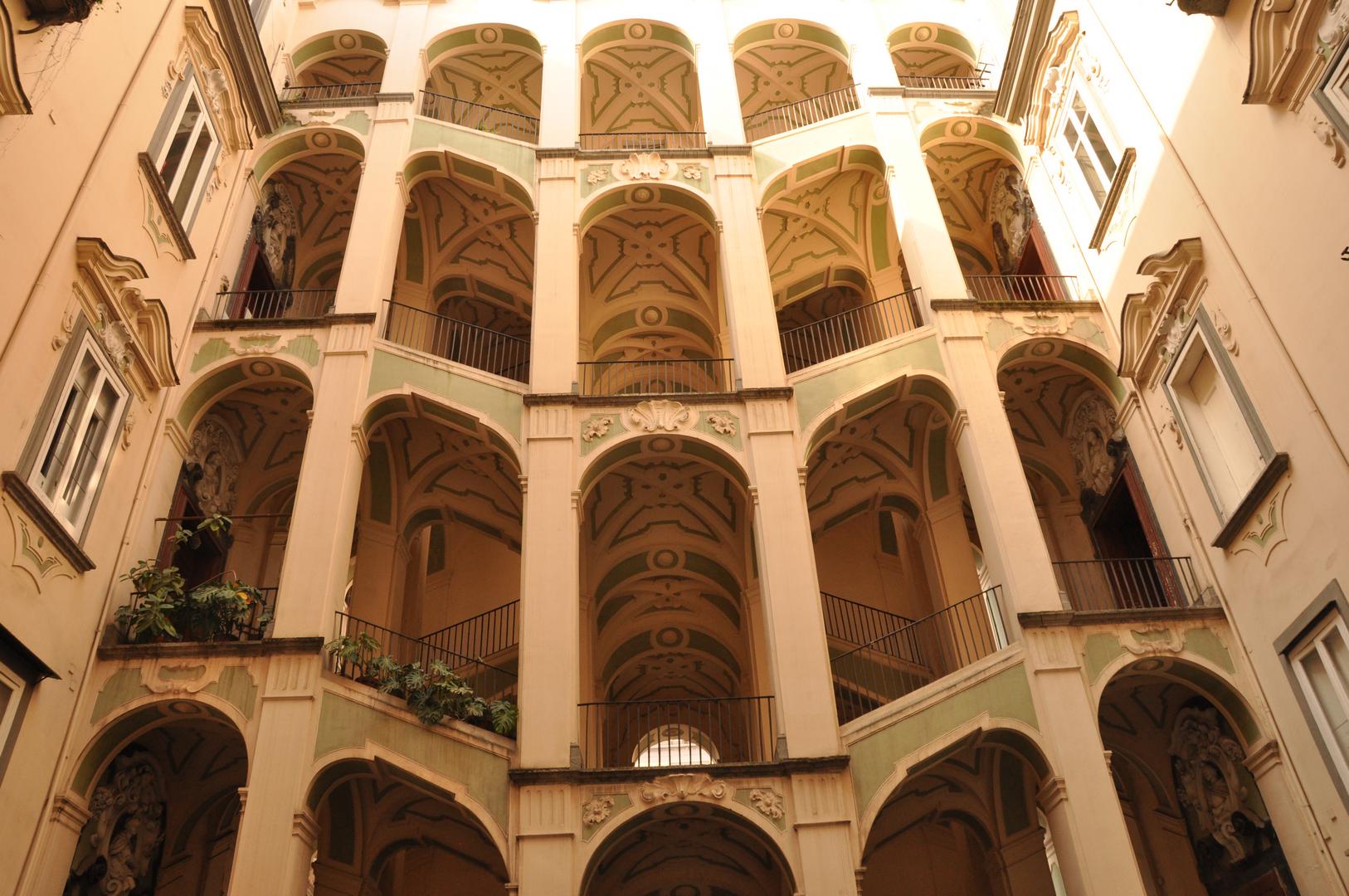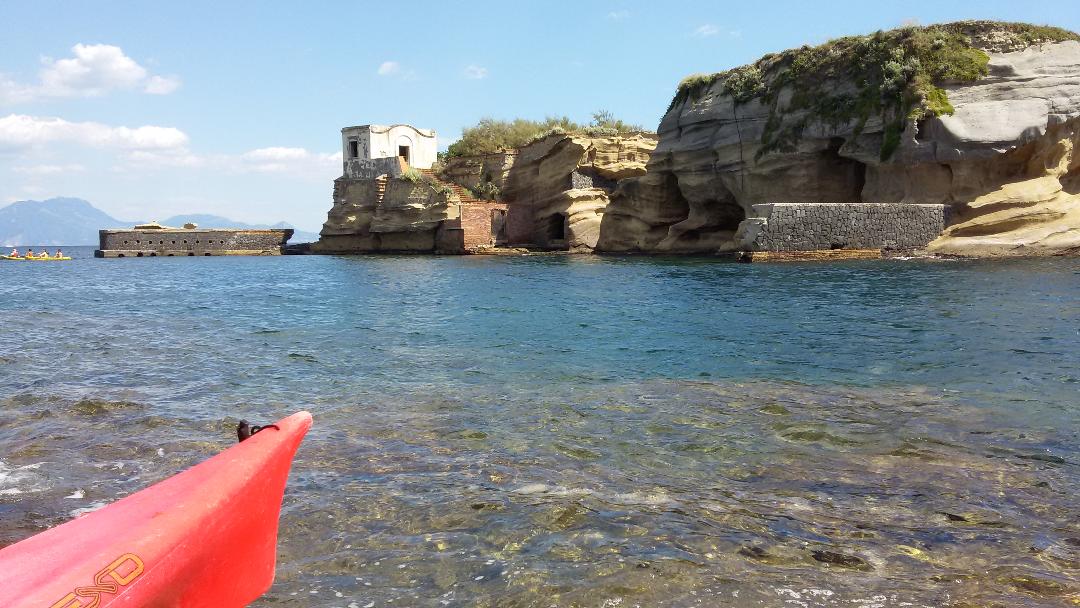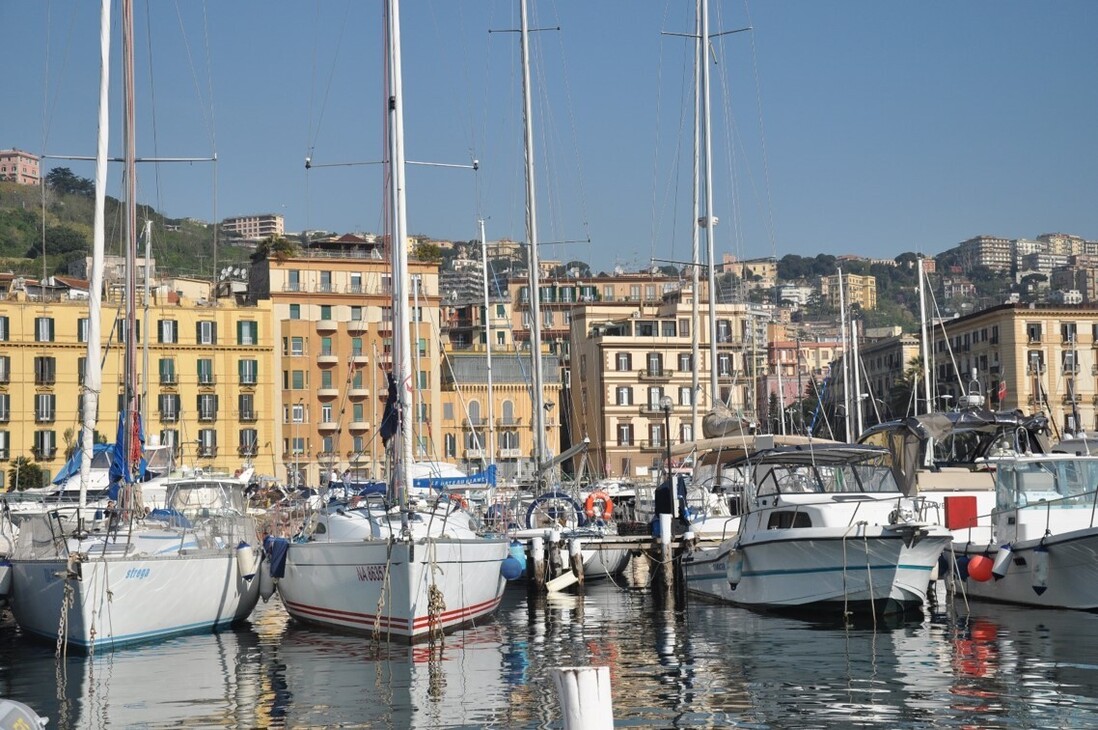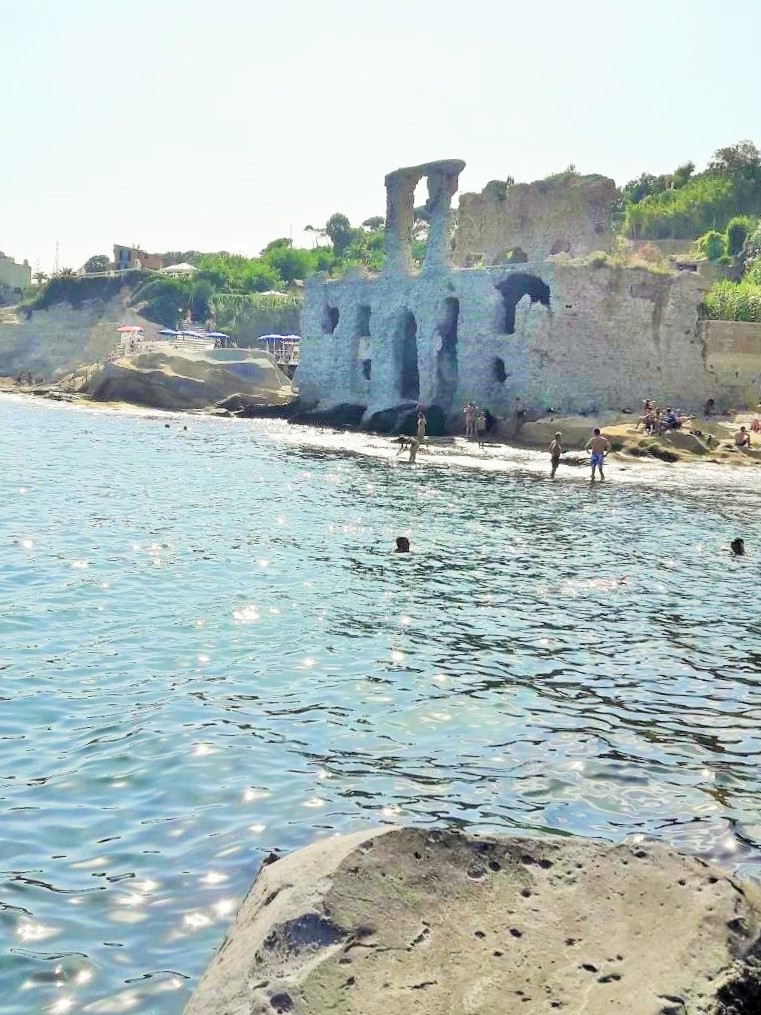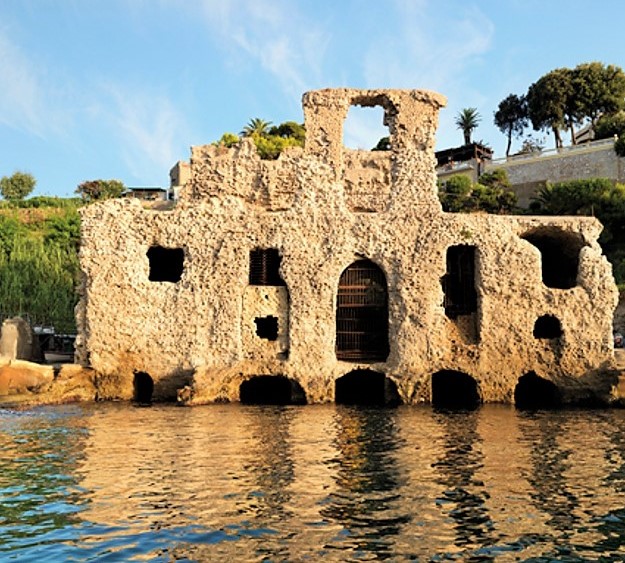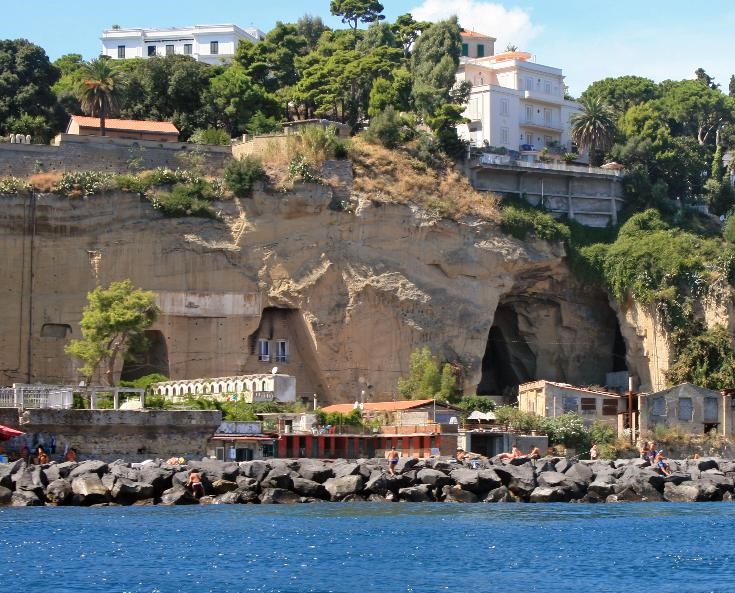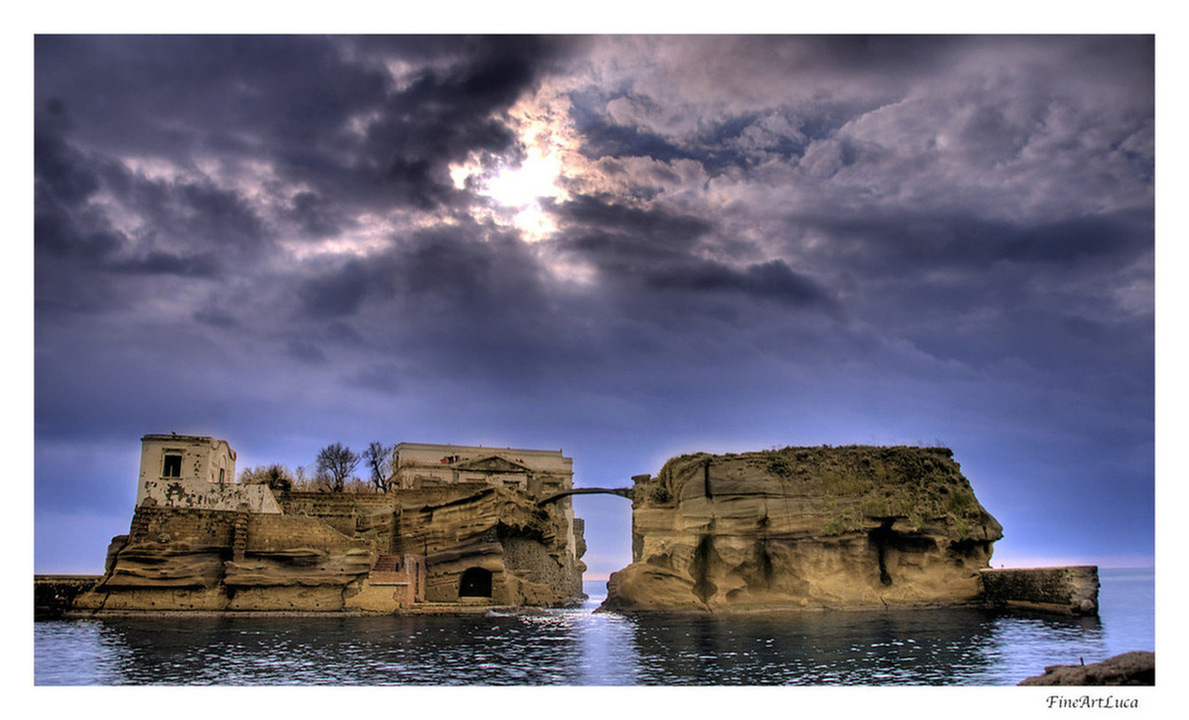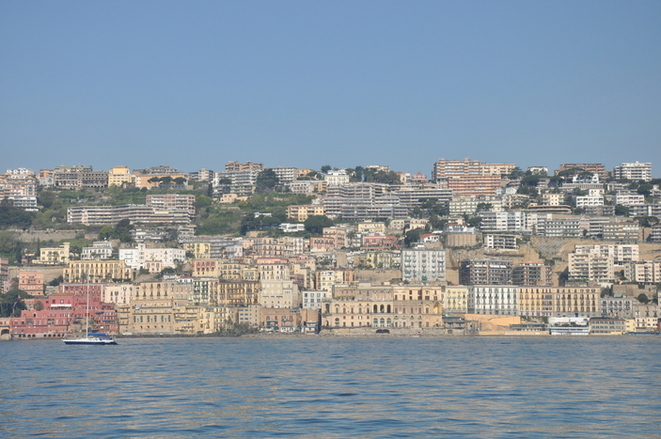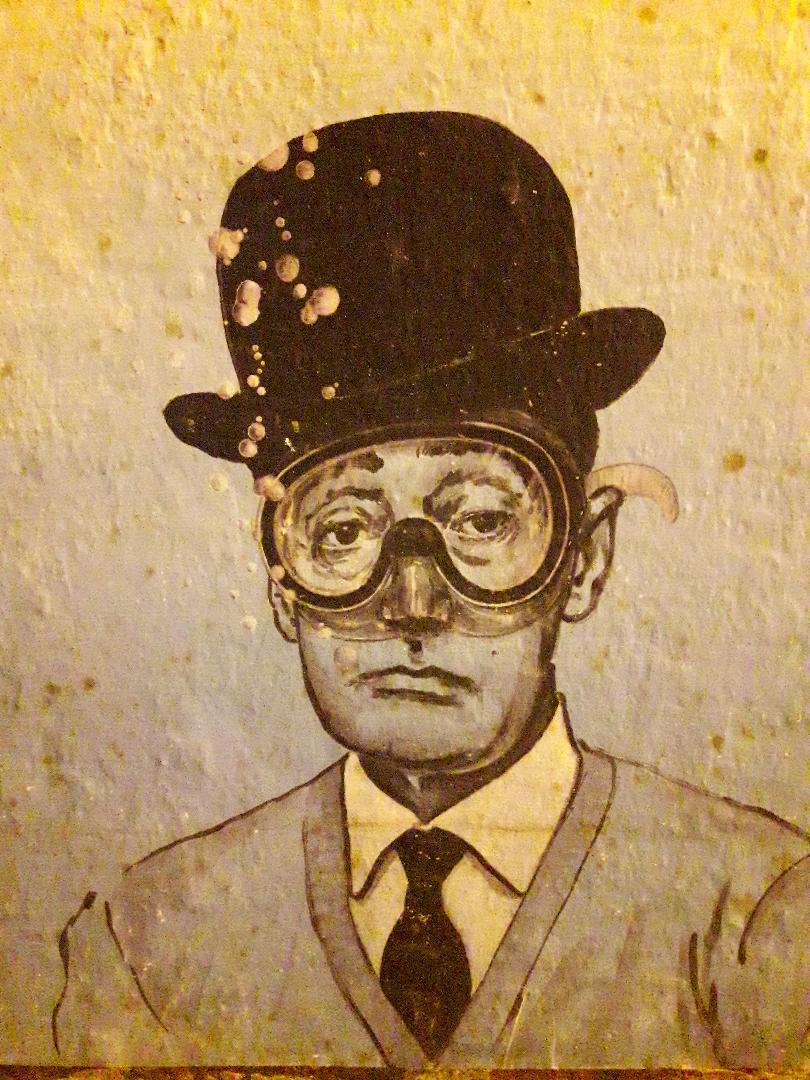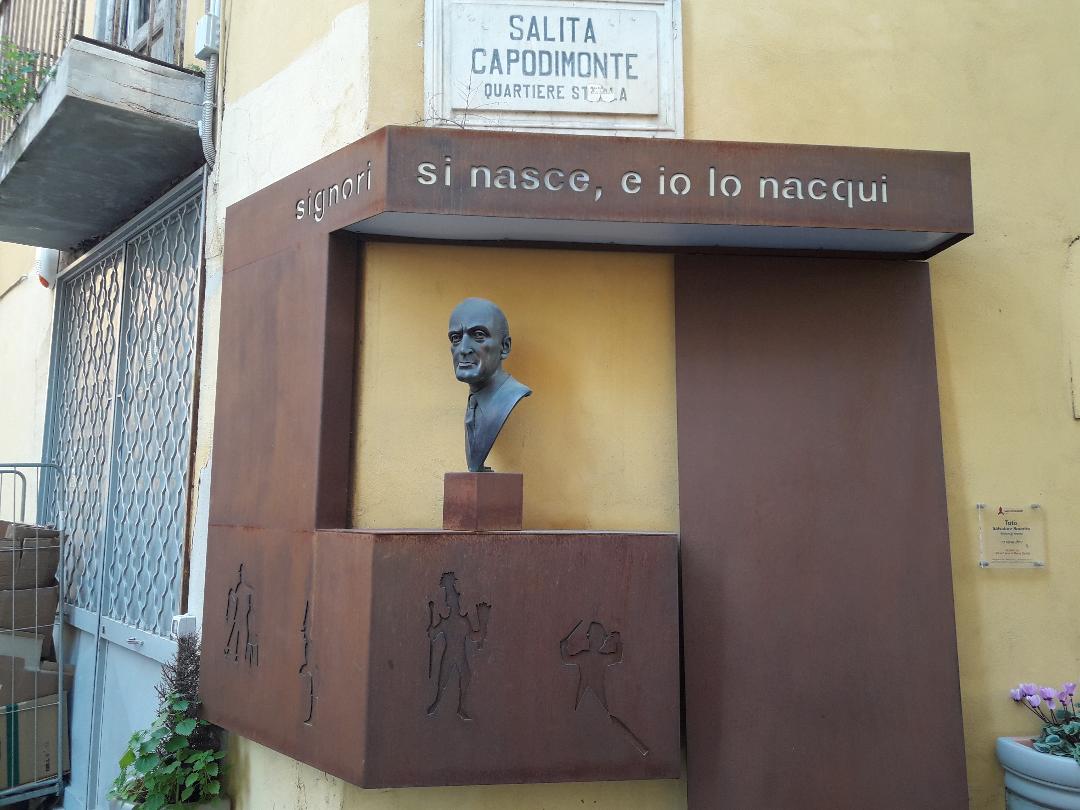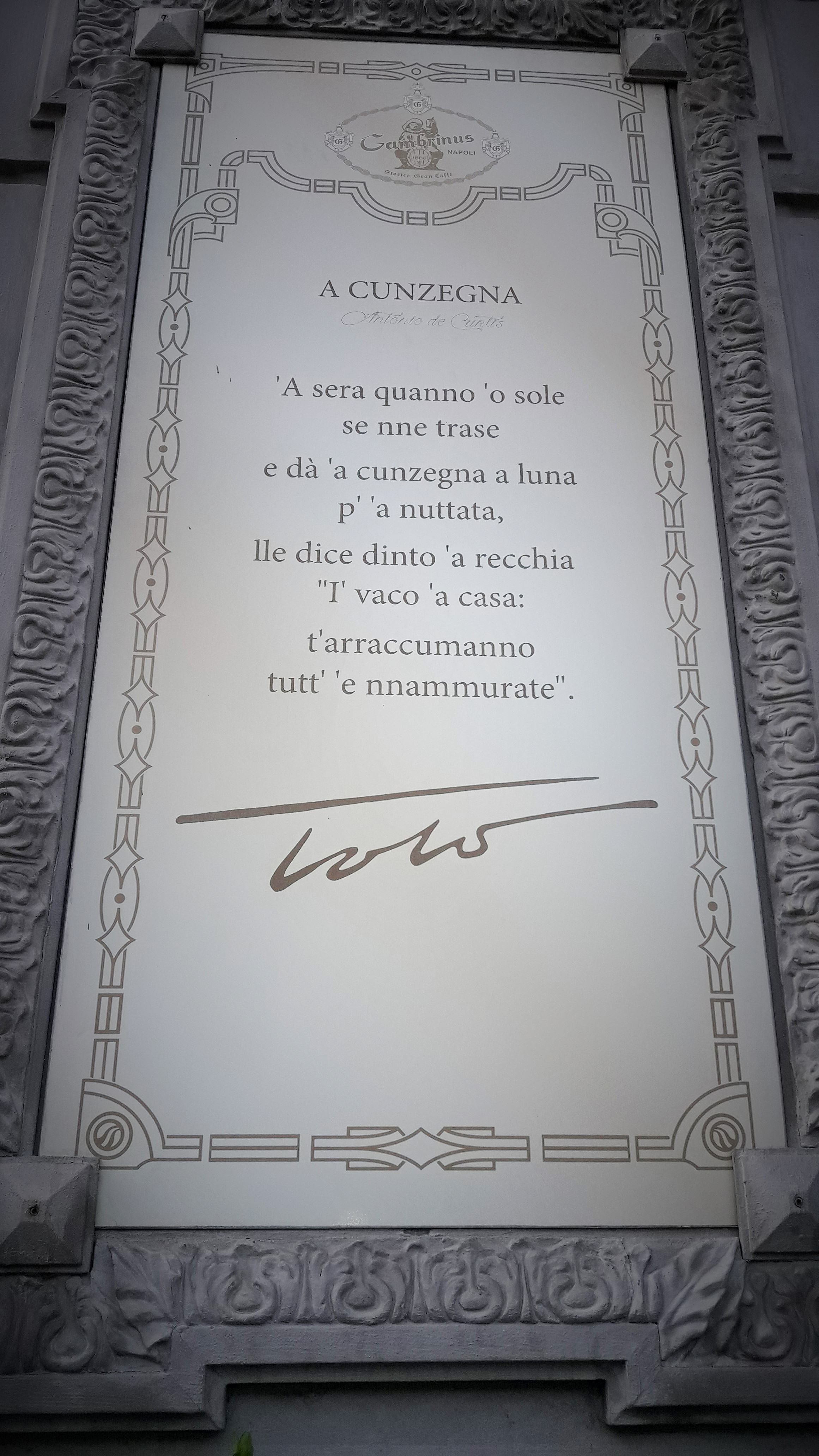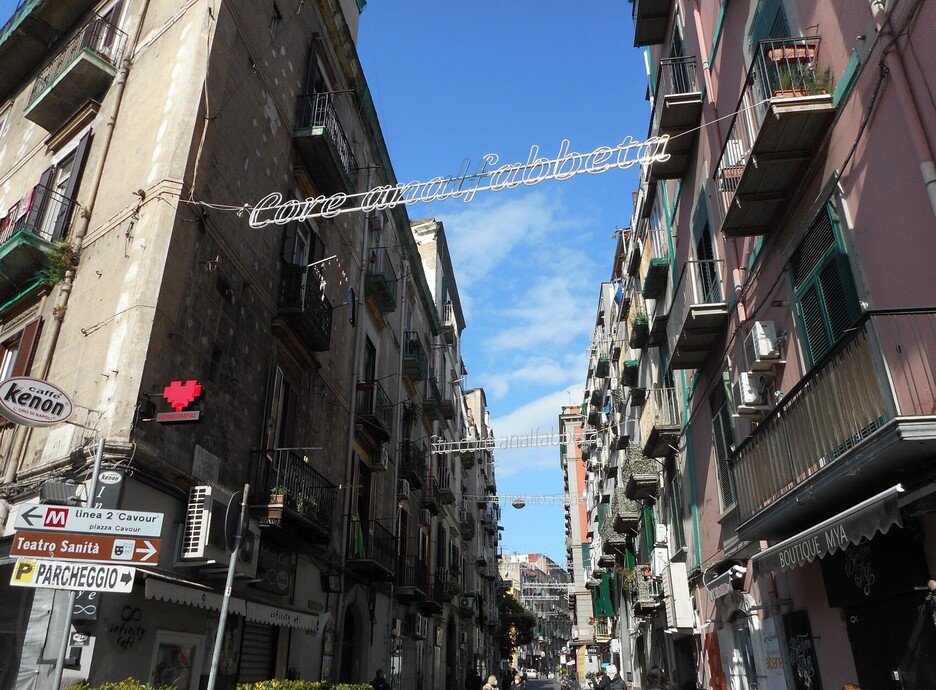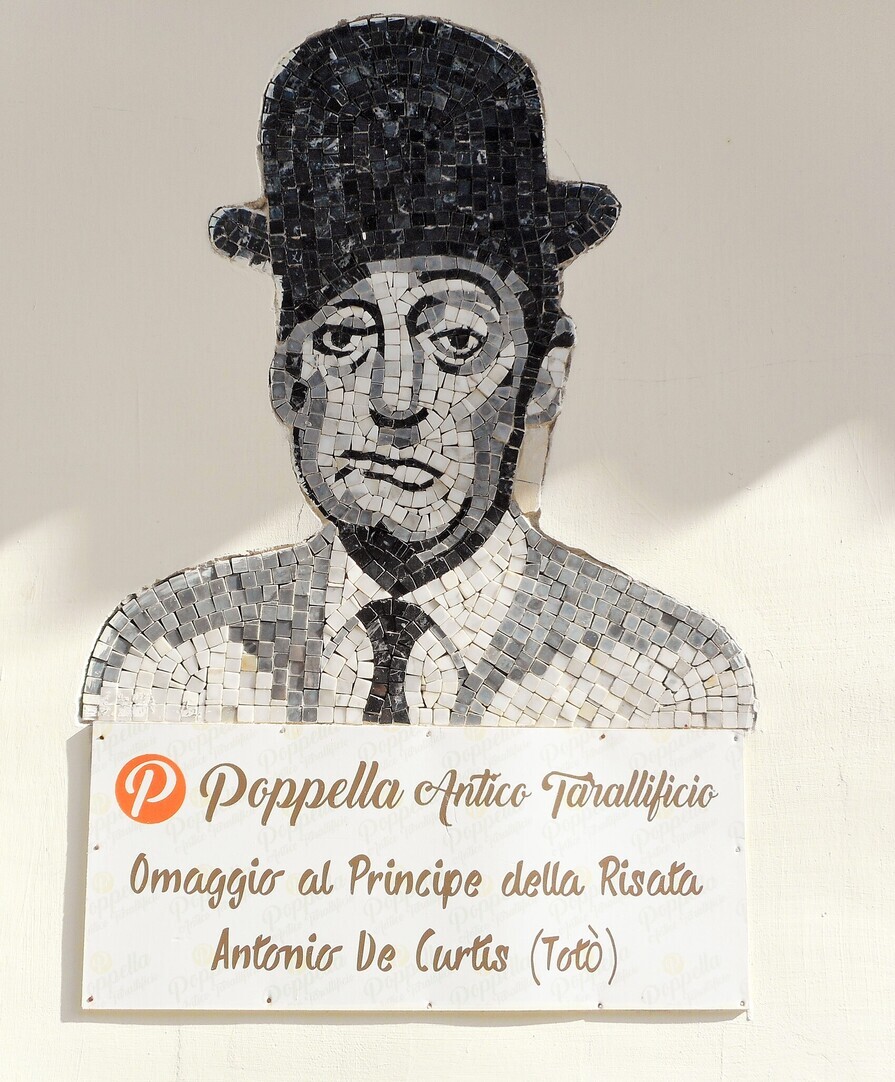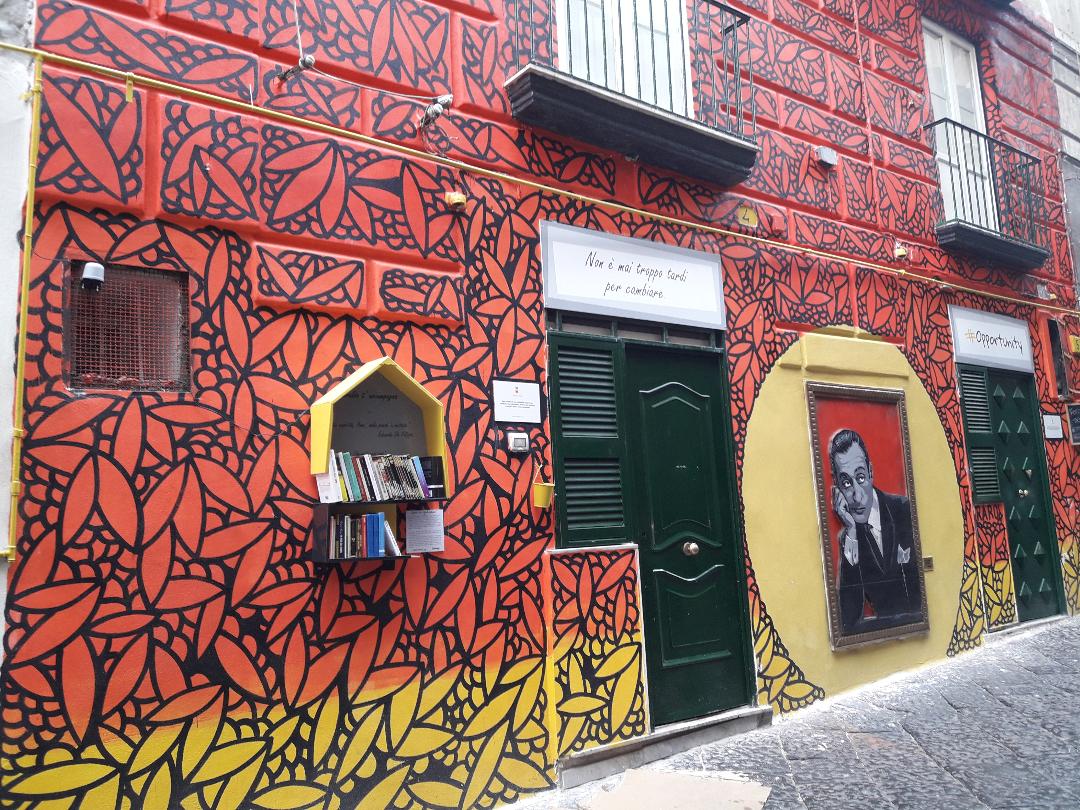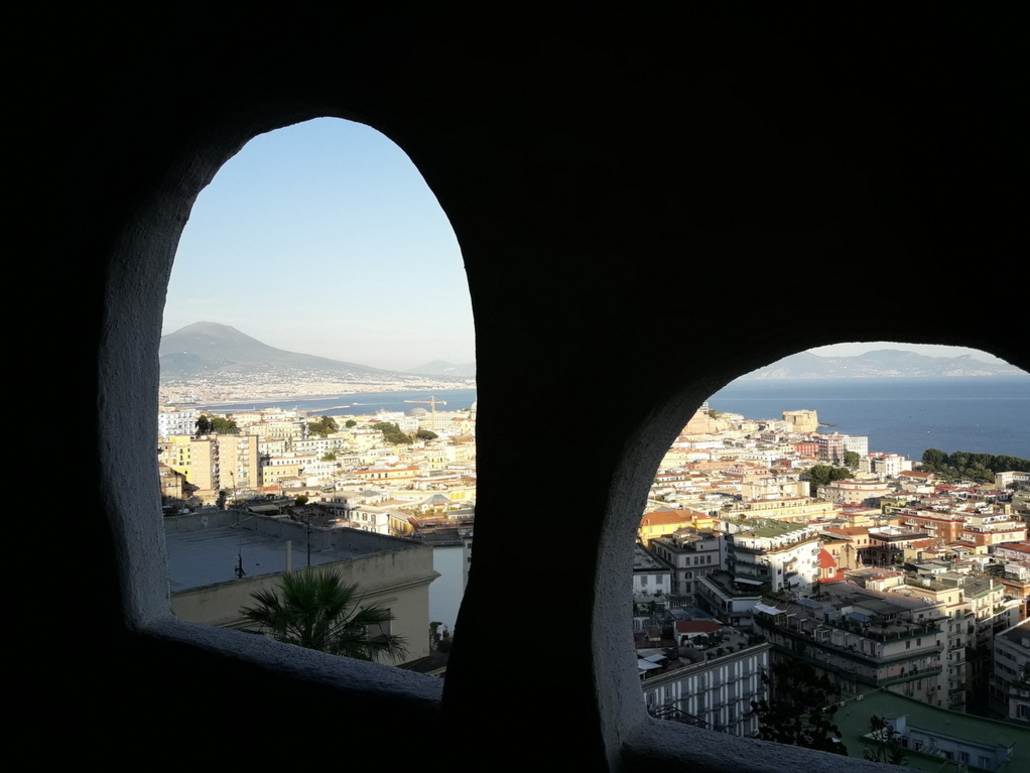Let’s dream about going sailing virtually in the Bay of Napoli!
Maybe this immersion in the fabulous Bay of Naples will make us feel a sense of freedom by breathing in our blue sea air and visualizing the history that surrounds us.
We’ll start our trip from Posillipo which in Greek means “respite from suffering”. Posillipo was a seaside resort for the Roman patricians, who loved to come here (especially in the Imperial Age) to enjoy the beauty of the bay and the Greek culture. Pliny the Elder, Suetonius and Martial wrote about this fascinating area and it is said that Virgil wrote his Georgics in a villa in this corner of the Empire.
The glory of Posillipo declined with the fall of the Empire and again in the Middle Ages but the fascinating archaeological remains of its glorious times are still visible. In fact, many walls in opus reticulatum can be seen along the coast and under the water.
A theatre and an odeon–once part of Pollio’s estate–are still standing. The open-air theatre has been restored and in the summer houses a theatre festival. You can read more about Vedius Pollio in our post 5 fabulous things to do in Naples.
The romantic ruins of the so-called Palazzo degli Spiriti represented in many engravings and paintings now stand amongst boats of fisherman, families, and “scugnizzi” (boisterous youth from Naples) that populate its surrounding cliffs in the hot summer months. Most of the Roman ruins have been integrated into modern private buildings or fancy condos and also restaurants like the renowned Cicciotto.
During our virtual sailing trip we approach the Borgo Marechiaro (borgo means small village). It was a fishing community with its church named Santa Maria del Faro, because it was built on the site of the ancient Roman lighthouse (“faro” means lighthouse).
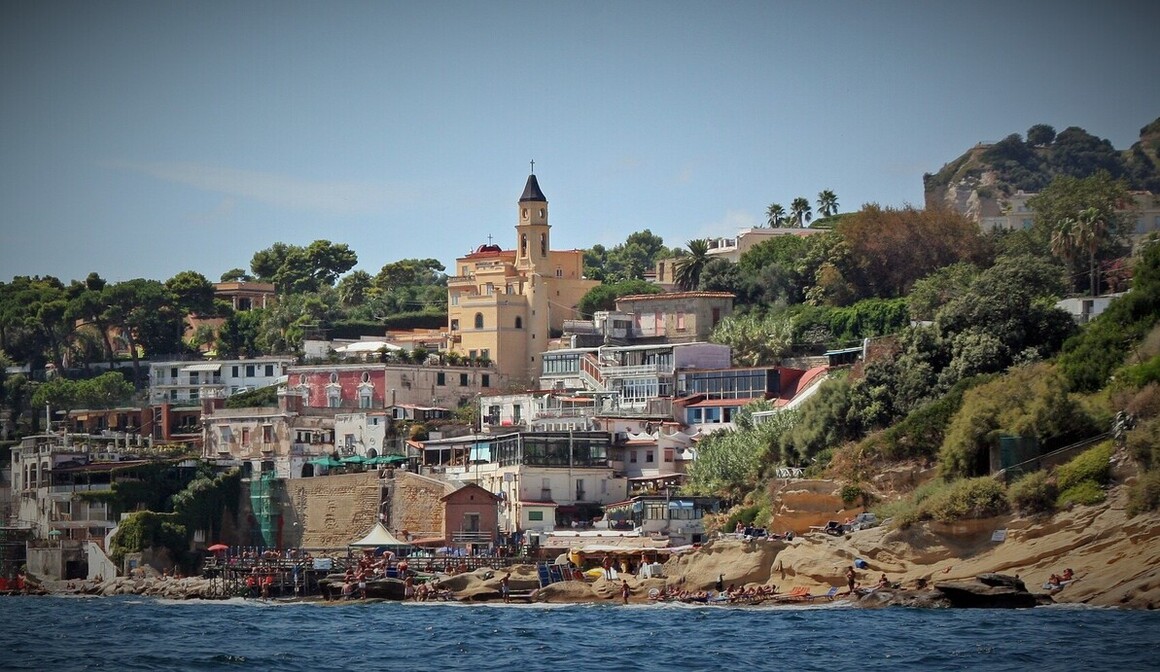
Chiesa di Santa Maria del Faro
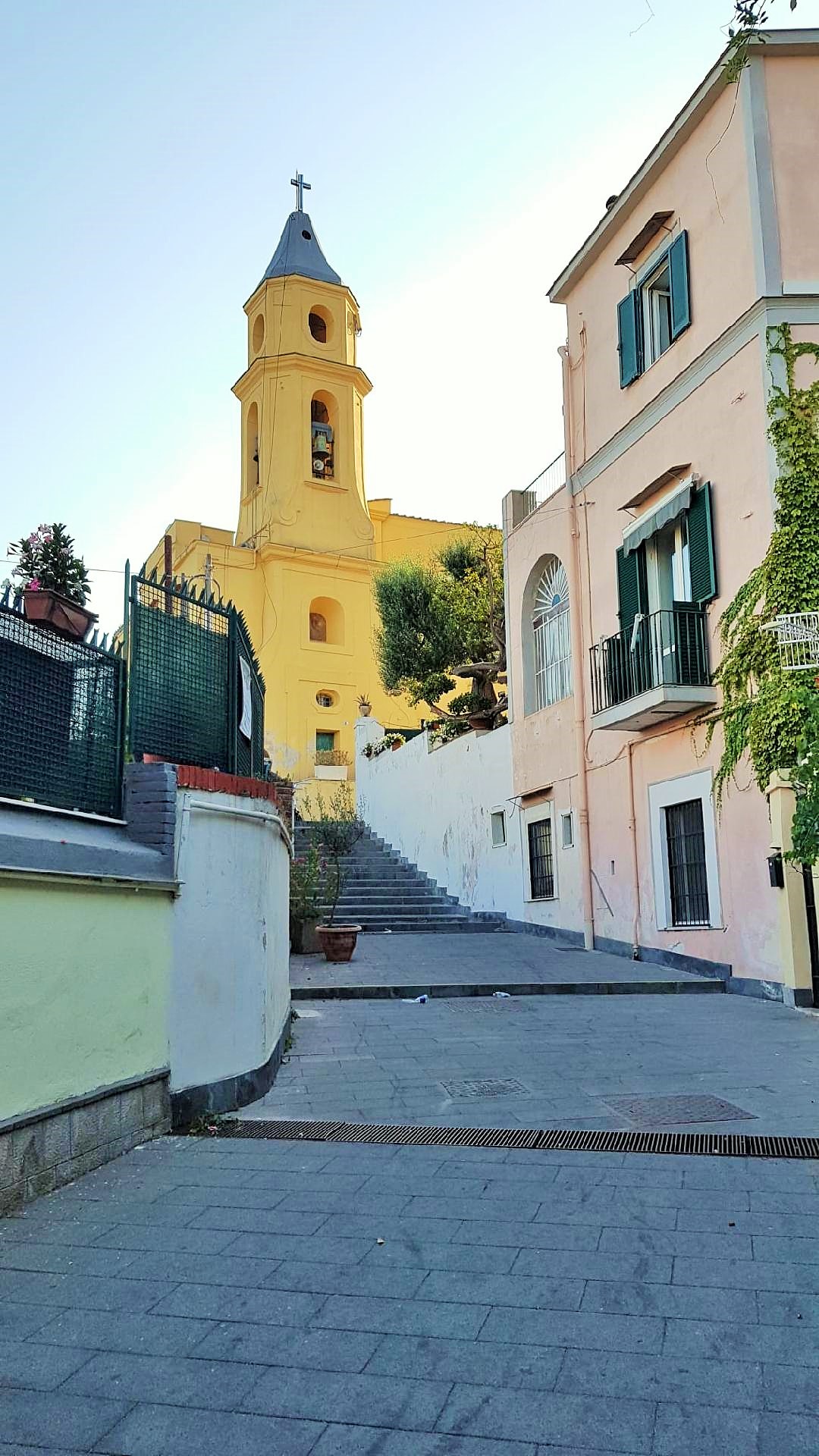
The 14th century church was renovated thanks to the Mazza family, nobles who owned properties in Marechiaro. In the 18th century architect Ferdinando Sanfelice remodelled this lovely church that still shows the Mazza coat of arms of 2 crossed sticks.
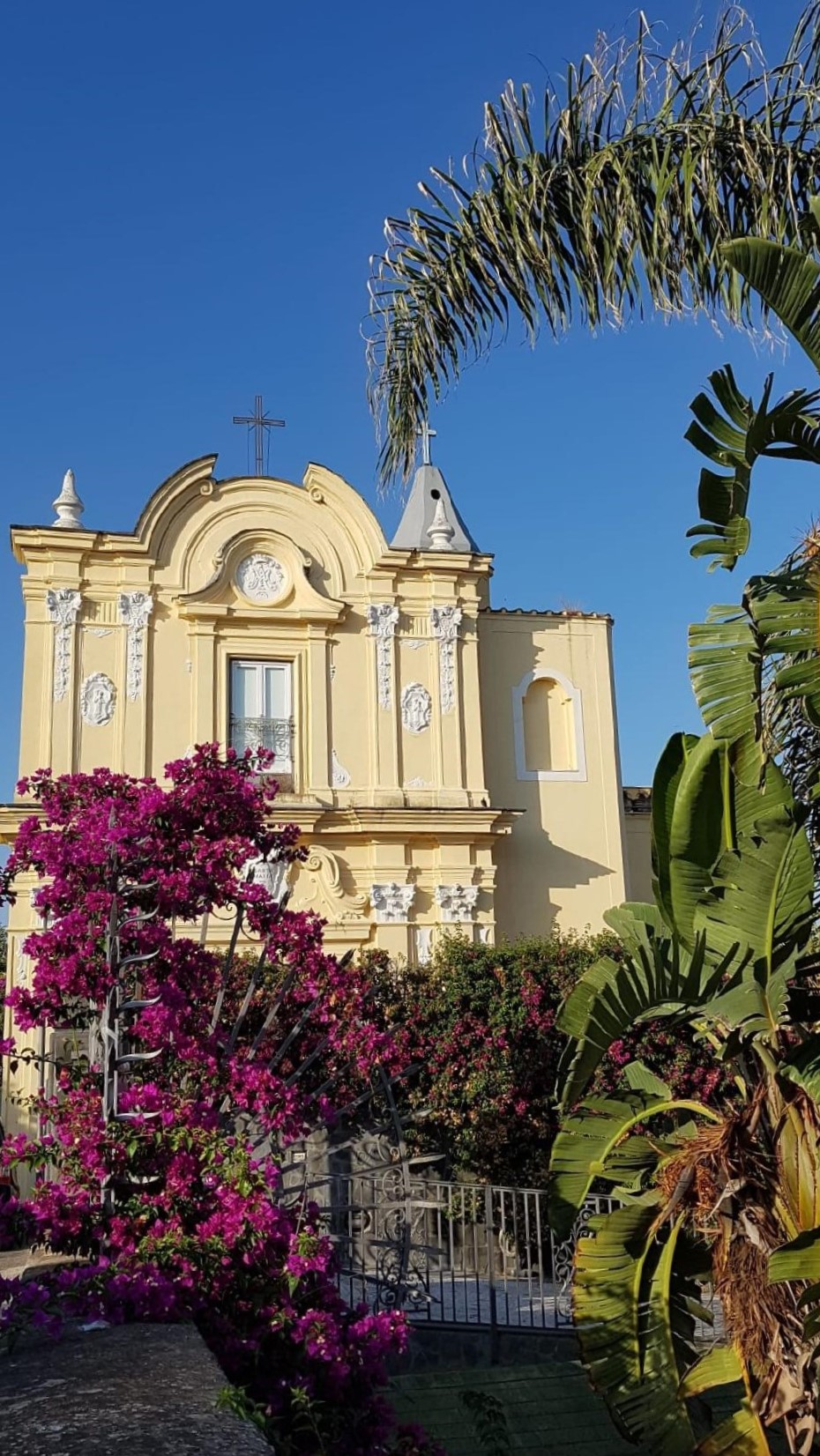
Façade of the Church Santa Maria del Faro

The Gaiola and Trentaremi incorporate relevant sections of the Pausilypon Villa, the vast estate belonging to Vedio Pollio of whom Palazzo degli Spiriti was probably a nymphaeum. Augustus inherited it after Vedio Pollio’s death in 15 BC. What an imperial property! In an incredible setting beteween Vesuvius and the island of Capri, Pausilypon was a typical example of a otium (leisured culture) villa where one could enjoy nature, peace, reading and meditation.
The Gaiola most likely gets its name from caveola, due to the many caves still visible in the yellow tufa stone which is soft and easy to erode.
The school of Virgil was located here as well as a temple dedicated to Venus, whose name Euplea was attributed to the still existing islet, on top of which stands an abandoned villa.
The villa belonged to some of the wealthiest people in the world, amongst them Agnelli and Paul Getty. Due to a sad destiny, non of these modern-day patricians enjoyed this enchanting property because of tragic events that fell upon their lives.
Today the Gaiola is a protected area, because on the sea bed it is possible to identify fish-ponds, docks and arcaheological remains of the Villa Pausilypon which is now under the sea level due to bradyseism (the gradual lifting or falling of the Earth’s surface due to volcanic activity). Infact, this volocanic phenomenon affects the coastline from Posillipo to Bagnoli and all the way to the pictoresque town of Pozzuoli, the ancient port of Rome.
In the 17th century Posillipo experienced a renaissance, once again becoming the chosen location for the aristocrats who “recycled” entire sections of Roman architecture as building materials or foundations for their fabulous residences.
In the 18th and 19th century this enchanting area started to be very popular also amongst artists. Many artists, also from other European countries loved to spend their time in this corner of paradise; painting outdoors and studying the light and colours of the South. The School of Posillipo, indeed, was started by the Dutch A. S. Pitloo in 1824, anticipatiing the much more well-known French Impressionism.
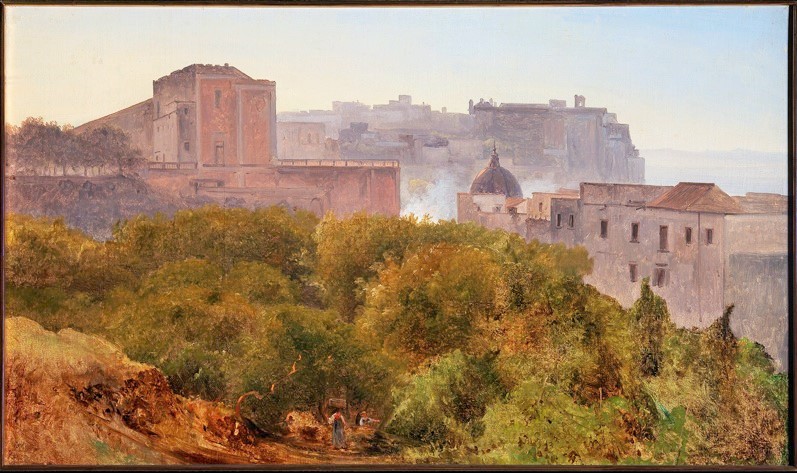
Anton Sminck Pitloo, The Grove of Francavilla at the Chiatamone
It was in the 19th century that many more private villas and the public street to connect Posillipo to the centre of Naples were built. Luckily a decree by King Gioaquin Murat protected the coast from construction facing the sea.
This is why looking at Naples from the sea is always a fabulous experience. It is a totally different prespective from the lively and bustling historical centre. Posillipo is another thing that sets Naples apart: where else can you rediscover gardens, beautiful ancient villas, citrus and pine trees, and also vineyards to in such a densely populated city?
Gaiola draws many people year round to canoe and kayak-who could resist a jump in the turquoise waters to cool off?
After a nice swim, let’s get back in our ecologically-friendly virtual sailboat to head to Castel dell’Ovo.
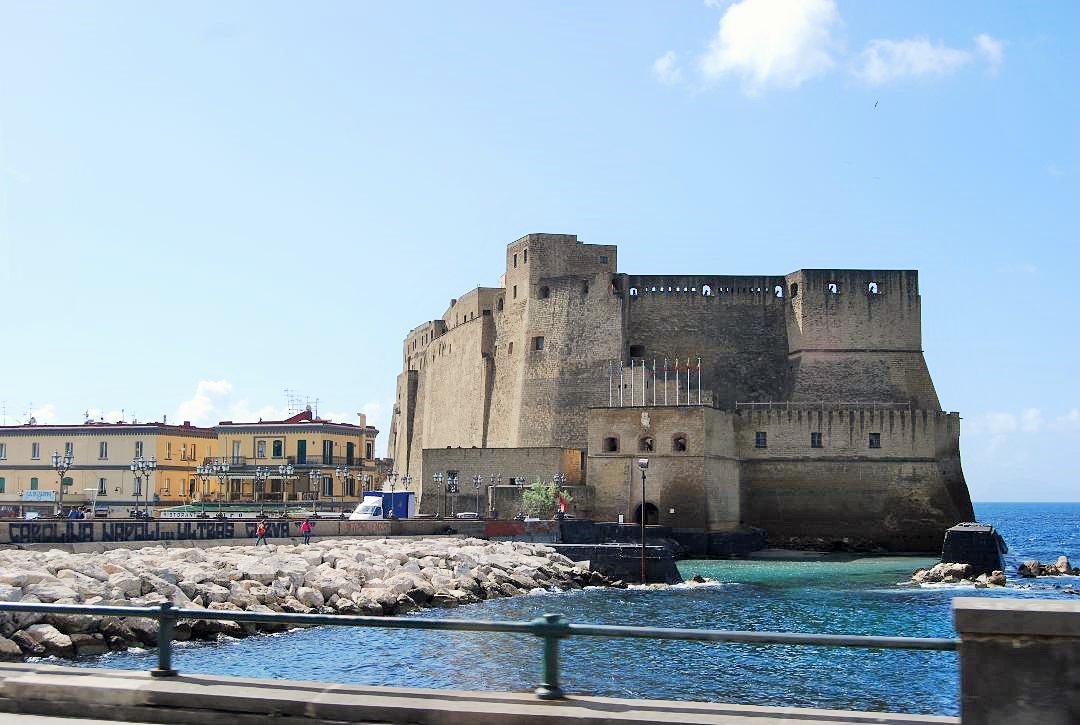
Castel dell’Ovo and Borgo Marinari
With its impressive walls in yellow tufa, the castle is said to get its name from its elliptical, oval shape or from the legend telling that Virgil had deposited an egg in its foundation. This icon of Naples stands on the islet of Megaride. Here the Greek settlment of Partenope was established between the 8th and 7th century BC in this already inhabited spot of the Bay. The story of Megaride is very stratified as in the 1st centry BC the Roman patrician Lucius Licinius Lucullus, famous for his palate, built his villa on this site. Some elements of the villa are still visible even if at the end of the 5th century a Basilian monastery was erected where the villa once stood. From the 12th century onwards, this castle which was modernalised by the lineage of kings of Naples, has continued to dominate the islet, today surrounded by bustling restaurants and cafes.
We must end our virtual tour with an aperitivo of traditional taralli and a beer at one of the kiosks lining the seafront as we watch the sun set upon our beloved city. In the past taralli were sold by the “tarallaro”, a man or a woman selling their basket-filled treats to people stolling along the coast, just as we are doing today.
The tarallo was probably invented in the 18th century in the populated area of the Port of Naples. Due to rampant poverty, bakers were mixing the leftover bread and pasta dough with lard (“nzogna” in Neapolitan) and pepper. They would make two little strips and then twist them to then form into a doughnut shape which would be baked along with their bread. At the beginning of the 19th century the “’nzogna e pepe” (lard and pepper) tarallo would be enhanced with almonds. This recipe has remained the same until today. Taralli have to be eaten when warm in order to appreciate their perfect consistency and fragrance. Aren’t you eager to taste them? If so, ask us for the recipe and we’ll send it to you!
